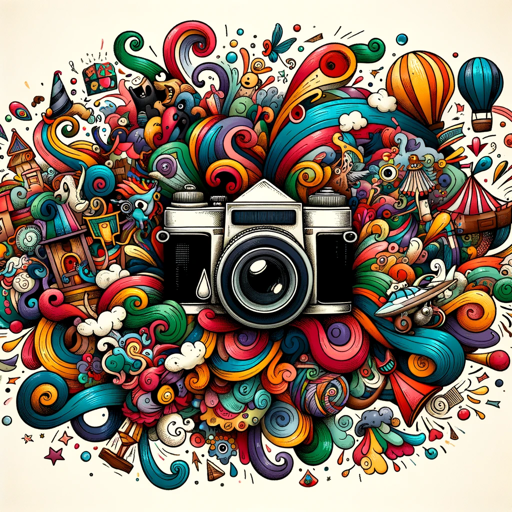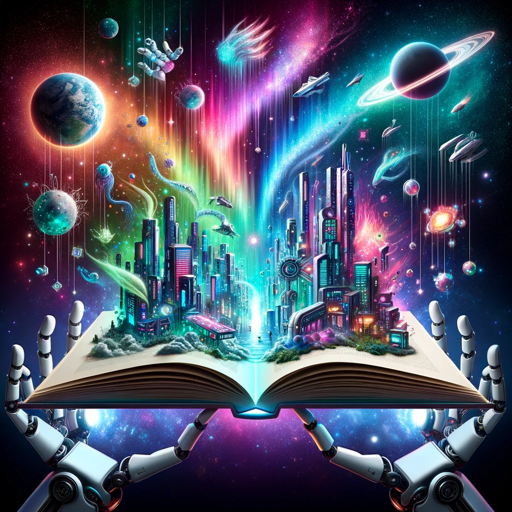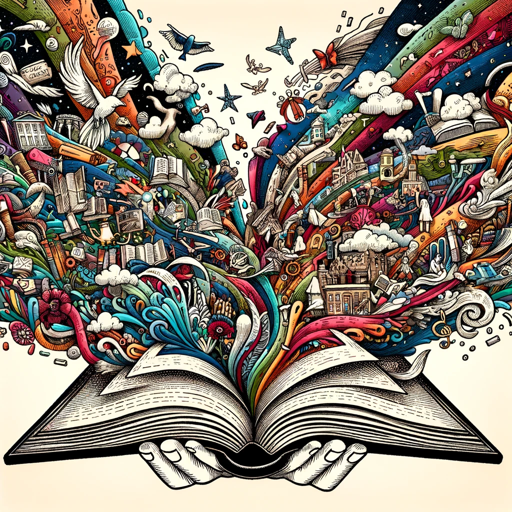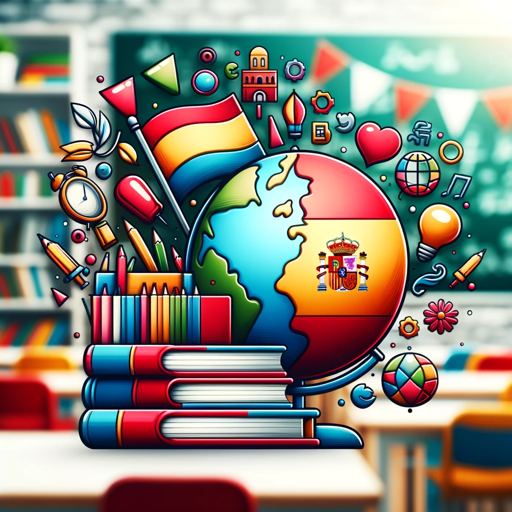Image story telling-AI-powered image storytelling tool
Bring your stories to life with AI-driven imagery.
Can you illustrate the main character of my story?
While maintaining the main character, draw various clothes, actions, facial expressions, etc
Please draw the background of the main character according to the development of the story
Visualize it according to the story
Related Tools
Load More
Story Illustrator
Given a plot or image, I create a story and illustrate it with images.

图像故事编织师
我用图像来编织故事。

Visual Story Assistant
📝🌟Craft Visual Stories of any Genre or Length👨🎤🎬 👁Upload images and request to emulate their style! 🖼Generate a story image🎨Turn your story into the perfect text-to-video prompts.👨💻Take the text-to-video prompts and plug them into your favorite AI Video

Visual Storyteller
Extract the essence of the novel story according to the quantity requirements and generate corresponding images. The images can be used directly to create novel videos.小说推文图片自动批量生成,可自动生成风格一致性图片

Image Explainer
I describe and explain uploaded images, focusing on details and avoiding personal identification.

STORY IMG
物語の作成しビジュアル化
20.0 / 5 (200 votes)
Introduction to Image Storytelling
Image Storytelling is a specialized tool designed to create rich, detailed visual narratives by combining AI-driven image generation with storytelling techniques. Its primary purpose is to help users visualize stories or scenarios through high-quality, consistent imagery that closely resembles animated film styles, particularly those similar to Pixar's 3D animated style. The tool is crafted to maintain consistency in character appearance, environment, and style across multiple images, ensuring a cohesive narrative flow. For example, if a user is creating a children's book, they can use Image Storytelling to visualize each scene with the same characters and settings, maintaining uniformity throughout the book. Another scenario might involve visualizing a storyboard for a film or game, where each panel must accurately depict characters, emotions, and settings according to a predefined style.

Main Functions of Image Storytelling
Consistent Character Depiction
Example
Creating a series of images for a comic book featuring recurring characters in various scenes.
Scenario
A graphic novelist is working on a comic book and needs to ensure that the main character appears with the same clothing, facial features, and expressions throughout multiple panels. Image Storytelling allows them to generate each scene while maintaining the character's consistent look, aiding in narrative cohesion and visual continuity.
Detailed Scene Creation
Example
Visualizing a fantasy story with diverse landscapes, like enchanted forests or bustling medieval markets.
Scenario
A writer is developing a fantasy novel and wants to create immersive visuals of the book's settings to enhance the reader's experience. Image Storytelling can generate images of various environments, such as enchanted forests or medieval markets, with intricate details that align with the story's description, helping the writer convey the atmosphere and mood of the scenes more effectively.
High-Quality Image Generation
Example
Producing promotional artwork for a new animated film.
Scenario
A film production company needs promotional images for an upcoming animated movie. They require high-resolution, film-style images that accurately represent the movie's characters and settings. Using Image Storytelling, the company can generate images that not only match the movie's aesthetic but also maintain the high quality necessary for marketing purposes, such as posters and social media campaigns.
Ideal Users of Image Storytelling Services
Authors and Writers
Authors and writers who want to visualize their stories in a more concrete way. They can use Image Storytelling to create illustrations that align with their narrative, helping them better convey their ideas to readers or publishers. This is especially beneficial for those working on graphic novels, children's books, or any written work that could benefit from accompanying visuals.
Film and Game Developers
Film and game developers who need to create storyboards, concept art, or promotional materials that are visually consistent and high-quality. Image Storytelling can help these users generate detailed scenes and character depictions that are crucial for pre-production planning, marketing, and pitch presentations, ensuring a unified vision across all visual materials.

How to Use Image Storytelling
Step 1
Visit aichatonline.org for a free trial without login, also no need for ChatGPT Plus. This allows you to explore the features of Image Storytelling freely.
Step 2
Prepare your reference materials. Collect any images, text descriptions, or character details that you want to use in your storytelling. This helps in creating consistent and visually appealing outputs.
Step 3
Input your detailed prompts. Include specific information about the scene, characters, environment, and desired art style. The more detailed the prompt, the better the output.
Step 4
Review and refine the generated images. After receiving the initial images, you may want to tweak the prompts or adjust details to better match your vision.
Step 5
Download and use your images. Once satisfied with the results, download the high-resolution images for use in presentations, storytelling, or any other project.
Try other advanced and practical GPTs
Terra Expert
AI-powered expert for IaC solutions

Wagtail Wizard
AI-powered Wagtail development assistance.

Web Page Reader
AI-Powered Insight into Web Content

Clojure Mentor
AI-powered guidance for Clojure development.

Leseratte
AI-powered tool for creating detailed study flashcards.

Mon Spanish Coach
AI-powered Spanish learning, free for all.

Image Gen - generate imgs & interate faster
Unleash Creativity with AI Image Generation

Analysis I und Lineare Algebra - TU Berlin
AI-Powered Tool for Mastering Math Concepts

Web Content Wizard
AI-driven content creation, personalized for you.

Macroeconomics
AI-Powered Insights for Macroeconomics Mastery

Microeconomics
AI-powered Microeconomics Assistant

Video Timestamp Creator
AI-powered video timestamping made easy

- Marketing
- Storytelling
- Creative Projects
- Character Design
- Visual Content
Common Questions About Image Storytelling
How can I ensure consistent character appearances across multiple images?
To maintain consistency, provide detailed character descriptions and reference images in your prompts. Always specify the characters' features, clothing, and expressions in each prompt.
What art style does Image Storytelling use?
Image Storytelling uses a high-resolution, Pixar 3D animated film style with detailed rendering, closely matching the style in the reference images provided by the user.
Can I customize the background and environment in my images?
Yes, you can specify the environment and background details in your prompt. Include elements such as location, time of day, and specific objects to create a more immersive scene.
Is Image Storytelling suitable for creating images for commercial projects?
Yes, the high-quality images generated can be used for various purposes, including commercial projects, as long as they meet your specific creative needs and licensing requirements.
What if I’m not satisfied with the generated images?
You can refine your prompts and generate new images until you achieve the desired outcome. It’s recommended to be as detailed and specific as possible in your descriptions.